 
Burton Loaders Ltd.
Edmonton, Alberta
It is not known exactly when Eugene Francis Burton of Edmonton first designed his Burton Garbage Loader. The truck shown here was photographed in Alberta sometime in 1951, and is believed to be an early example. Indeed, the truck appears to be marked as a 'demonstrator', with these photos likely taken to promote his new product.
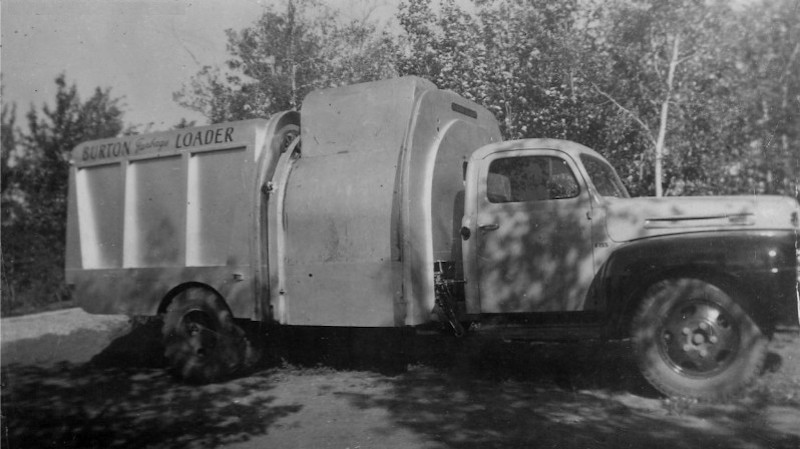
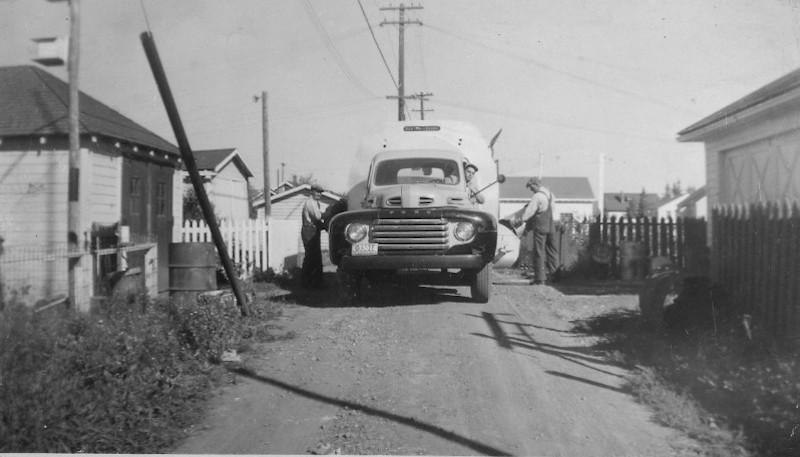
As the above images clearly show, this is a dual-bucket loader, with rail-guided troughs on either side of the body. To empty them, the troughs were elevated and tipped over the body opening. This was most likely done using a winch and cable arrangement driven from a power take-off, which was common practice at the time.
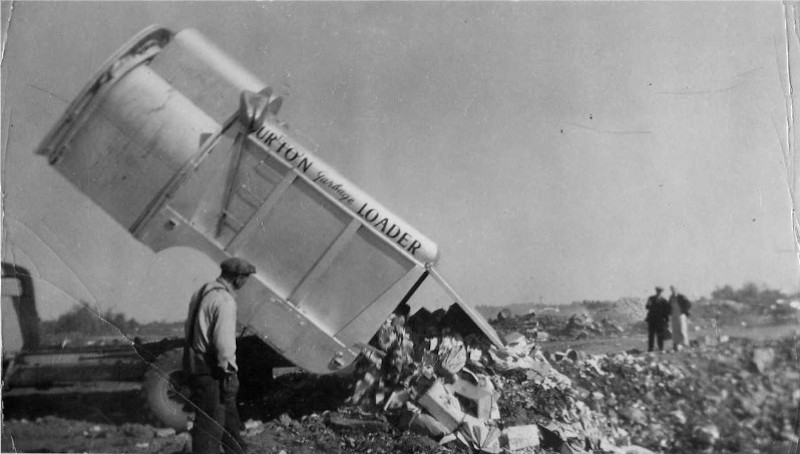
This early version of the Burton body looks very advanced, at least stylistically, for the period when these photographs were taken. Obviously, we see it is a tilt-to-dump type. Along the route, the body was also probably hoisted periodically to consolidate the refuse load toward the rear. One can't rule out the possibility that it had a partial-packing blade at the front of the body, though these photos don't show evidence of such a feature. Regardless, this is an exceptionally clean design for its day, and may have been constructed of weight-saving aluminum.
BURTON HYDRAULIC LIFT ARM
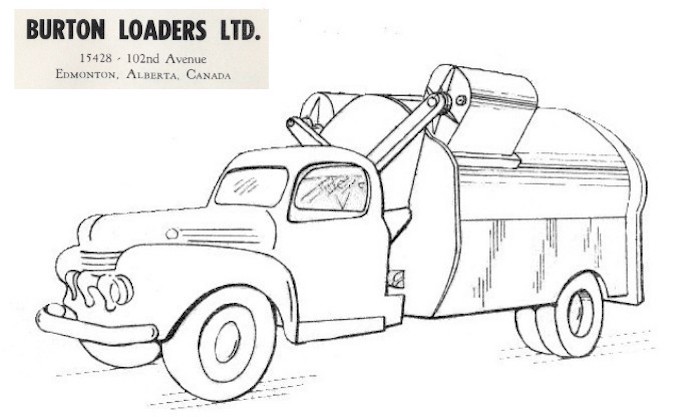
In the fall of 1956, Burton applied for a patent on a revised version of his side loader. Canadian patent #576392 was granted in 1959, and describes a refuse body using direct-lift hydraulic cylinders to raise each bucket via solid lift arms. The double-acting cylinders (one for each side) raised, emptied and returned each bucket to the loading position automatically, by way of a novel linkage arrangement. Each bucket could be operated while the vehicle traveled between stops. The Burton was probably the first residential side-bucket loader to use direct-lift hydraulic power for this function. The principle would later be applied to commercial container lifts used by Pak-Mor and Truxmore side loaders beginning in the early 1960s.

This second-generation Burton Automatic Garbage Loader was a modern and efficient refuse body, with the addition of a full-travel packer/ejector panel applying 25,000 pounds of pressure, doubling the capacity of the sixteen cubic yard body. The reinforced body featured a hydraulically raised bubble type tailgate, one of the first in the industry. Burton's design overcame a serious handicap of competitive side loaders, which was loading height. The side buckets were just 28 above street level, compared to the much greater heights of other contemporary hand-loaded designs; these typically required the workmen to climb a step to empty each trash barrel into the body. The Burton was obviously limited in its ability to take bulk items, such as furniture, though this was usually less of a concern at this point in time. Sanitary collection and disposal of household garbage and refuse were the primary concerns for most municipalities, and the Burton could ably perform this task.
Additionally, Burton's loader arms lifted the buckets quite high, almost above the roofline, allowing for an unusually high loading aperture in the body. This minimized the effect of fallback , which occurs as side packer bodies become filled, and refuse begins to fall back into the hopper area and impede loading. In this regard, the Burton loader was on par with large front-loaders such as Bowles and Dempster.
The City of Edmonton was apparently one of Burton's biggest customers, but it is quite likely this advanced design saw regional popularity throughout the western provinces, and possibly beyond. Eugene Burton died in 1991, around the time that side bucket-loading trucks were making a comeback. It was during this time that the burgeoning market for multiple-stream recycling collection bodies had once again revived the side-bucket concept. This new generation of specialized bodies utilized many of the same features of Burton's automatic loader, for which he may have been justifiably proud.
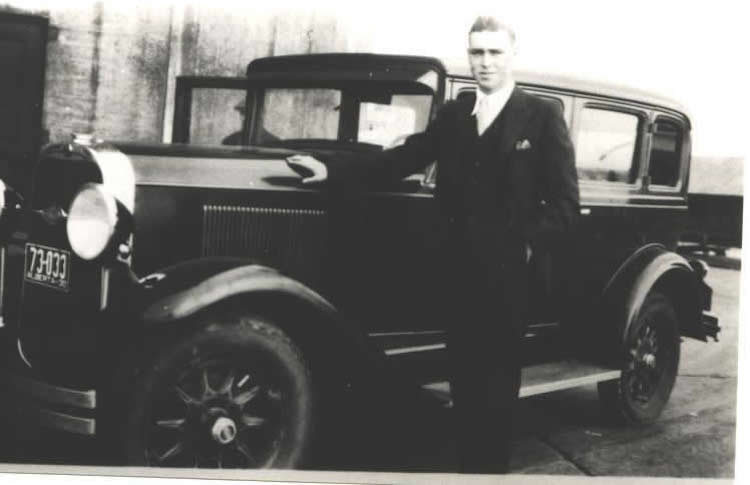
Above: Eugene Burton circa 1935
Sincere thanks to Krista Francis-Poscente, granddaughter of Eugene Burton,
who graciously contributed material used in this article
|

4/3/11
© 2011
All Rights Reserved
Logos shown are the trademarks of respective manufacturers
Photos from factory brochures/trade advertisements except as noted
|
| |